1. Bray F, Jemal A, Grey N, Ferlay J, Forman D. Global cancer transitions according to the Human Development Index (2008-2030): a population-based study. Lancet Oncol. 2012; 13:790–801. PMID:
22658655.

2. Foreman KJ, Marquez N, Dolgert A, Fukutaki K, Fullman N, McGaughey M, et al. Forecasting life expectancy, years of life lost, and all-cause and cause-specific mortality for 250 causes of death: reference and alternative scenarios for 2016-40 for 195 countries and territories. Lancet. 2018; 392:2052–2090. PMID:
30340847.

3. Kocarnik JM, Compton K, Dean FE, Fu W, Gaw BL, et al. Global Burden of Disease 2019 Cancer Collaboration. Cancer incidence, mortality, years of life lost, years lived with disability, and disability-adjusted life years for 29 cancer groups from 2010 to 2019: a systematic analysis for the global burden of disease study 2019. JAMA Oncol. 2022; 8:420–444. PMID:
34967848.
4. Wyld L, Audisio RA, Poston GJ. The evolution of cancer surgery and future perspectives. Nat Rev Clin Oncol. 2015; 12:115–124. PMID:
25384943.

5. Sullivan R, Alatise OI, Anderson BO, Audisio R, Autier P, Aggarwal A, et al. Global cancer surgery: delivering safe, affordable, and timely cancer surgery. Lancet Oncol. 2015; 16:1193–1224. PMID:
26427363.

6. Ng R, Sutradhar R, Yao Z, Wodchis WP, Rosella LC. Smoking, drinking, diet and physical activity-modifiable lifestyle risk factors and their associations with age to first chronic disease. Int J Epidemiol. 2020; 49:113–130. PMID:
31329872.

7. Jones P, Karim Sulaiman S, Gamage KN, Tokas T, Jamnadass E, Somani BK. Do lifestyle factors including smoking, alcohol, and exercise impact your risk of developing kidney stone disease? Outcomes of a systematic review. J Endourol. 2021; 35:1–7. PMID:
32808537.

8. Lee SR, Choi EK, Ahn HJ, Han KD, Oh S, Lip GY. Association between clustering of unhealthy lifestyle factors and risk of new-onset atrial fibrillation: a nationwide population-based study. Sci Rep. 2020; 10:19224. PMID:
33154443.

9. Shi L, Shu XO, Li H, Cai H, Liu Q, Zheng W, et al. Physical activity, smoking, and alcohol consumption in association with incidence of type 2 diabetes among middle-aged and elderly Chinese men. PLoS One. 2013; 8:e77919. PMID:
24223743.

10. Ford ES, Zhao G, Tsai J, Li C. Low-risk lifestyle behaviors and all-cause mortality: findings from the National Health and Nutrition Examination Survey III Mortality Study. Am J Public Health. 2011; 101:1922–1929. PMID:
21852630.

11. Katzke VA, Kaaks R, Kühn T. Lifestyle and cancer risk. Cancer J. 2015; 21:104–110. PMID:
25815850.

12. Song SO, Jung CH, Song YD, Park CY, Kwon HS, Cha BS, et al. Background and data configuration process of a nationwide population-based study using the korean national health insurance system. Diabetes Metab J. 2014; 38:395–403. PMID:
25349827.

13. Lee YH, Shin MH, Kweon SS, Choi JS, Rhee JA, Ahn HR, et al. Cumulative smoking exposure, duration of smoking cessation, and peripheral arterial disease in middle-aged and older Korean men. BMC Public Health. 2011; 11:94. PMID:
21310081.

14. Fan JG, Jia JD, Li YM, Wang BY, Lu LG, Shi JP, et al. Guidelines for the diagnosis and management of nonalcoholic fatty liver disease: update 2010: (published in Chinese on Chinese Journal of Hepatology 2010; 18:163-166). J Dig Dis. 2011; 12:38–44. PMID:
21276207.

15. Farrell GC, Chitturi S, Lau GK, Sollano JD. Asia-Pacific Working Party on NAFLD. Guidelines for the assessment and management of non-alcoholic fatty liver disease in the Asia-Pacific region: executive summary. J Gastroenterol Hepatol. 2007; 22:775–777. PMID:
17565629.

16. Oh TK, Kim HG, Song IA. New, long-term opioid use after lung cancer surgery is associated with reduced 2-year survival: a retrospective population-based cohort study in South Korea. Reg Anesth Pain Med. 2022; rapm-2022-103769.

17. Song YJ. The South Korean health care system. JMAJ. 2009; 52:206–209.
18. Pelucchi C, Gallus S, Garavello W, Bosetti C, La Vecchia C. Cancer risk associated with alcohol and tobacco use: focus on upper aero-digestive tract and liver. Alcohol Res Health. 2006; 29:193–198. PMID:
17373408.
19. Pierre S, Rivera C, Le Maître B, Ruppert AM, Bouaziz H, Wirth N, et al. Guidelines on smoking management during the perioperative period. Anaesth Crit Care Pain Med. 2017; 36:195–200. PMID:
28238936.

20. Schaefers C, Seidel C, Bokemeyer F, Bokemeyer C. The prognostic impact of the smoking status of cancer patients receiving systemic treatment, radiation therapy, and surgery: a systematic review and meta-analysis. Eur J Cancer. 2022; 172:130–137. PMID:
35763872.

21. Pleasants RA, Rivera MP, Tilley SL, Bhatt SP. Both duration and pack-years of tobacco smoking should be used for clinical practice and research. Ann Am Thorac Soc. 2020; 17:804–806. PMID:
32348693.

22. Saquib N, Stefanick ML, Natarajan L, Pierce JP. Mortality risk in former smokers with breast cancer: pack-years vs. smoking status. Int J Cancer. 2013; 133:2493–2497. PMID:
23649774.

23. Janjigian YY, McDonnell K, Kris MG, Shen R, Sima CS, Bach PB, et al. Pack-years of cigarette smoking as a prognostic factor in patients with stage IIIB/IV nonsmall cell lung cancer. Cancer. 2010; 116:670–675. PMID:
20029977.

24. Eliasen M, Grønkjær M, Skov-Ettrup LS, Mikkelsen SS, Becker U, Tolstrup JS, et al. Preoperative alcohol consumption and postoperative complications: a systematic review and meta-analysis. Ann Surg. 2013; 258:930–942. PMID:
23732268.
25. Myoga Y, Manabe H, Osaki Y. The effects of preoperative alcohol, tobacco, and psychological stress on postoperative complications: a prospective observational study. BMC Anesthesiol. 2021; 21:245. PMID:
34645400.

26. Loogman L, de Nes LC, Heil TC, Kok DE, Winkels RM, Kampman E, et al. The association between modifiable lifestyle factors and postoperative complications of elective surgery in patients with colorectal cancer. Dis Colon Rectum. 2021; 64:1342–1353. PMID:
34082436.

27. Zhao M, Veeranki SP, Magnussen CG, Xi B. Recommended physical activity and all cause and cause specific mortality in US adults: prospective cohort study. BMJ. 2020; 370:m2031. PMID:
32611588.

28. Onerup A, Bock D, Börjesson M, Fagevik Olsén M, Gellerstedt M, Haglind E, et al. Is preoperative physical activity related to post-surgery recovery?: a cohort study of colorectal cancer patients. Int J Colorectal Dis. 2016; 31:1131–1140. PMID:
26951184.

29. Onerup A, Angerås U, Bock D, Börjesson M, Fagevik Olsén M, Gellerstedt M, et al. The preoperative level of physical activity is associated to the postoperative recovery after elective cholecystectomy: a cohort study. Int J Surg. 2015; 19:35–41. PMID:
26003290.

30. Billé A, Buxton J, Viviano A, Gammon D, Veres L, Routledge T, et al. Preoperative physical activity predicts surgical outcomes following lung cancer resection. Integr Cancer Ther. 2021; 20:1534735420975853. PMID:
33835869.

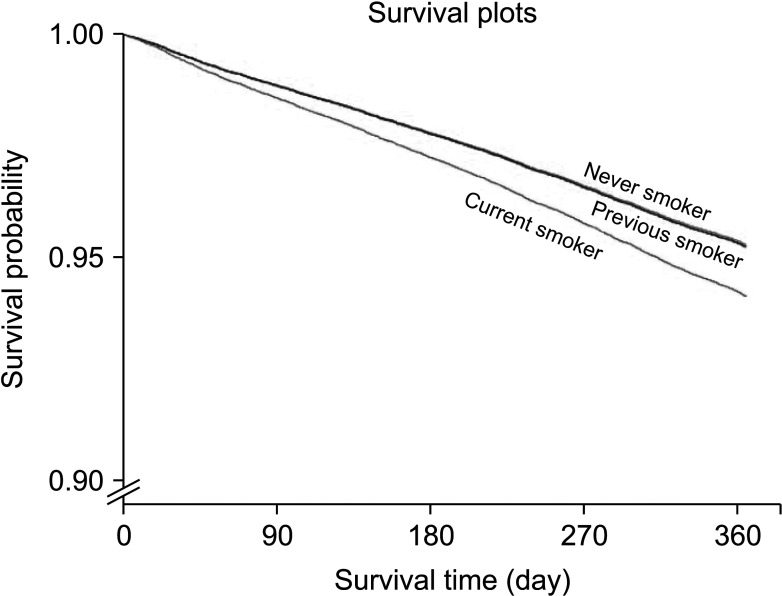
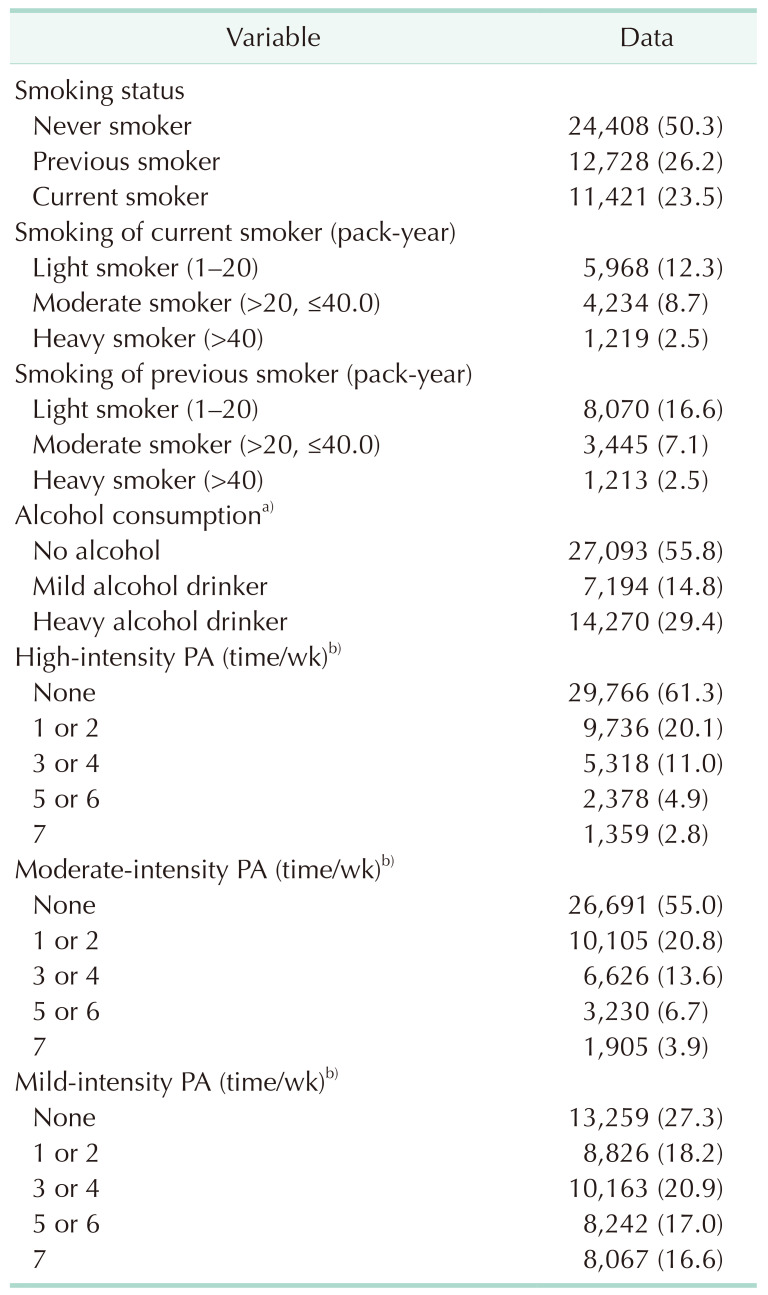
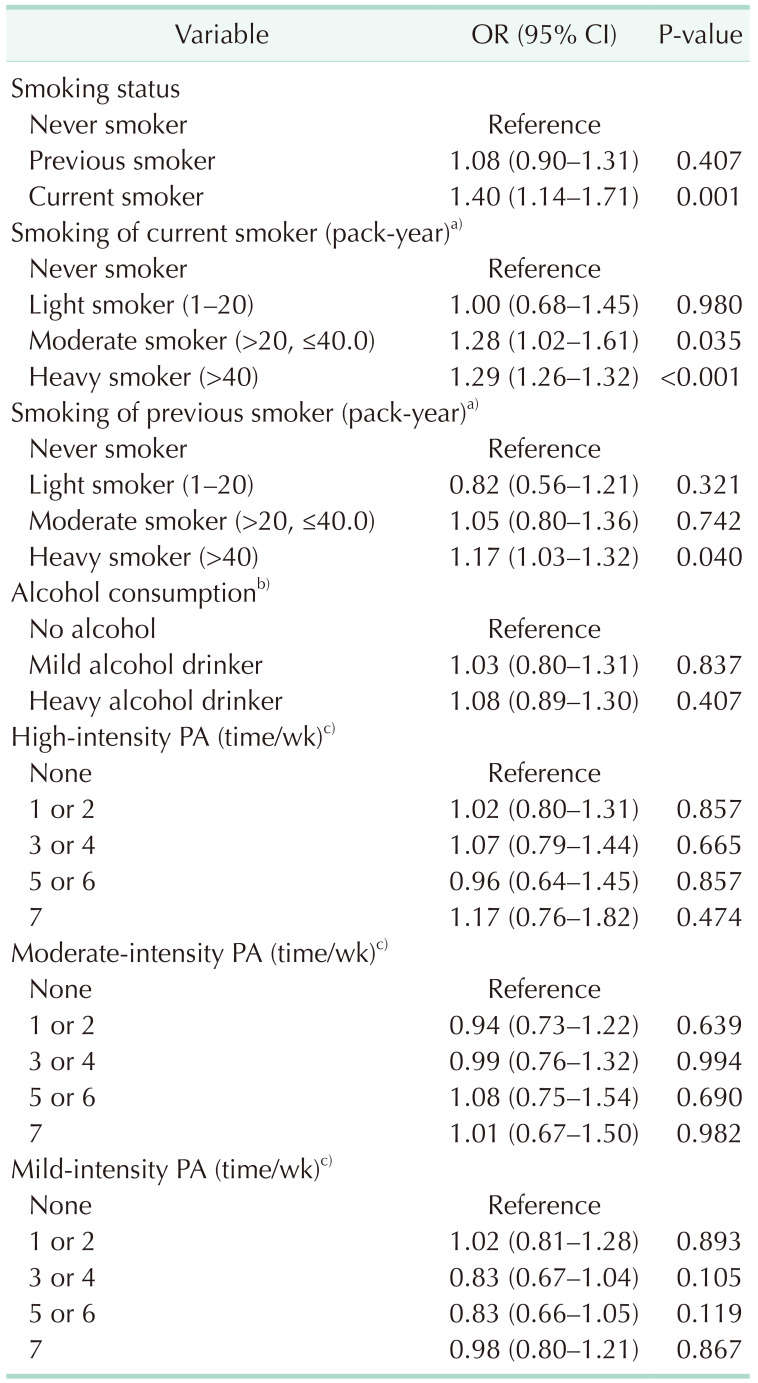
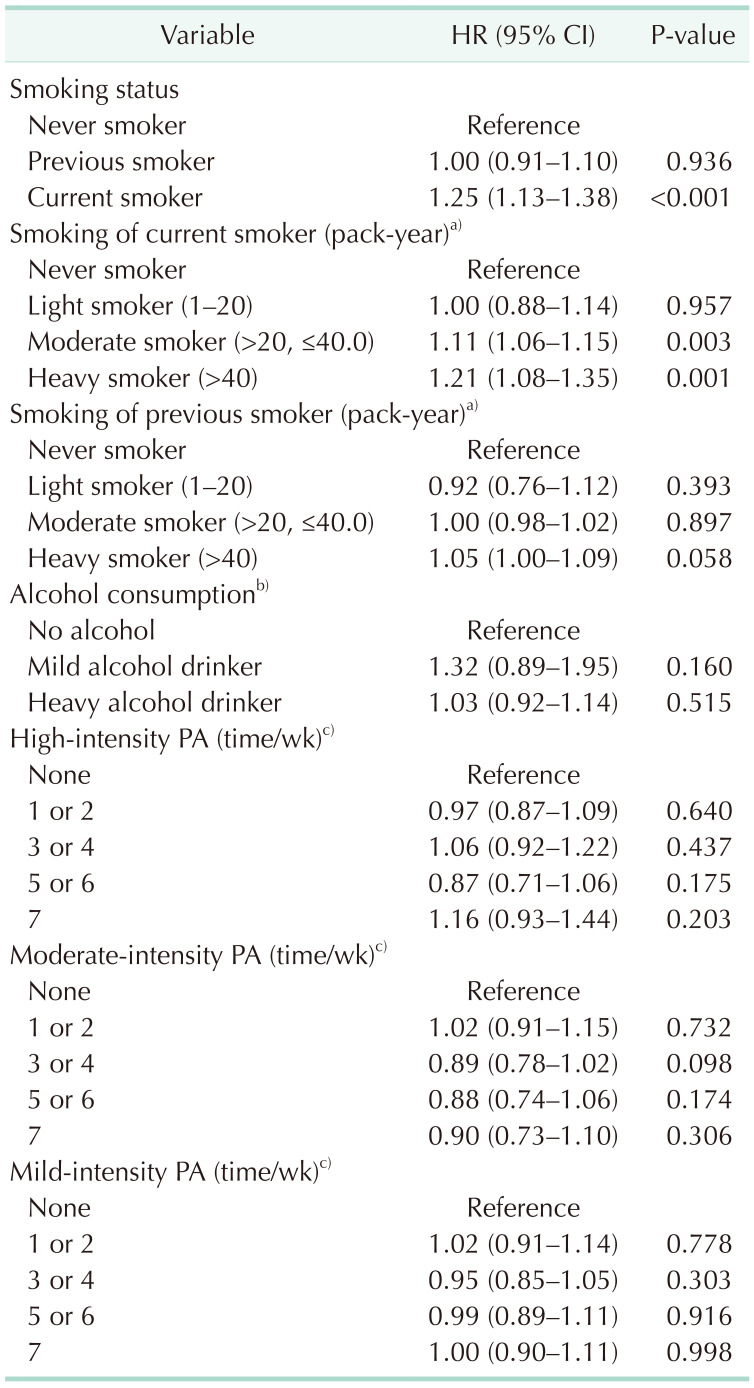




 PDF
PDF Citation
Citation Print
Print



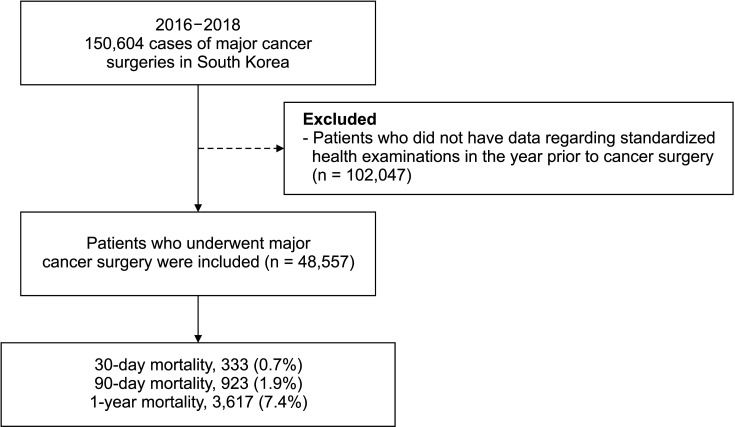
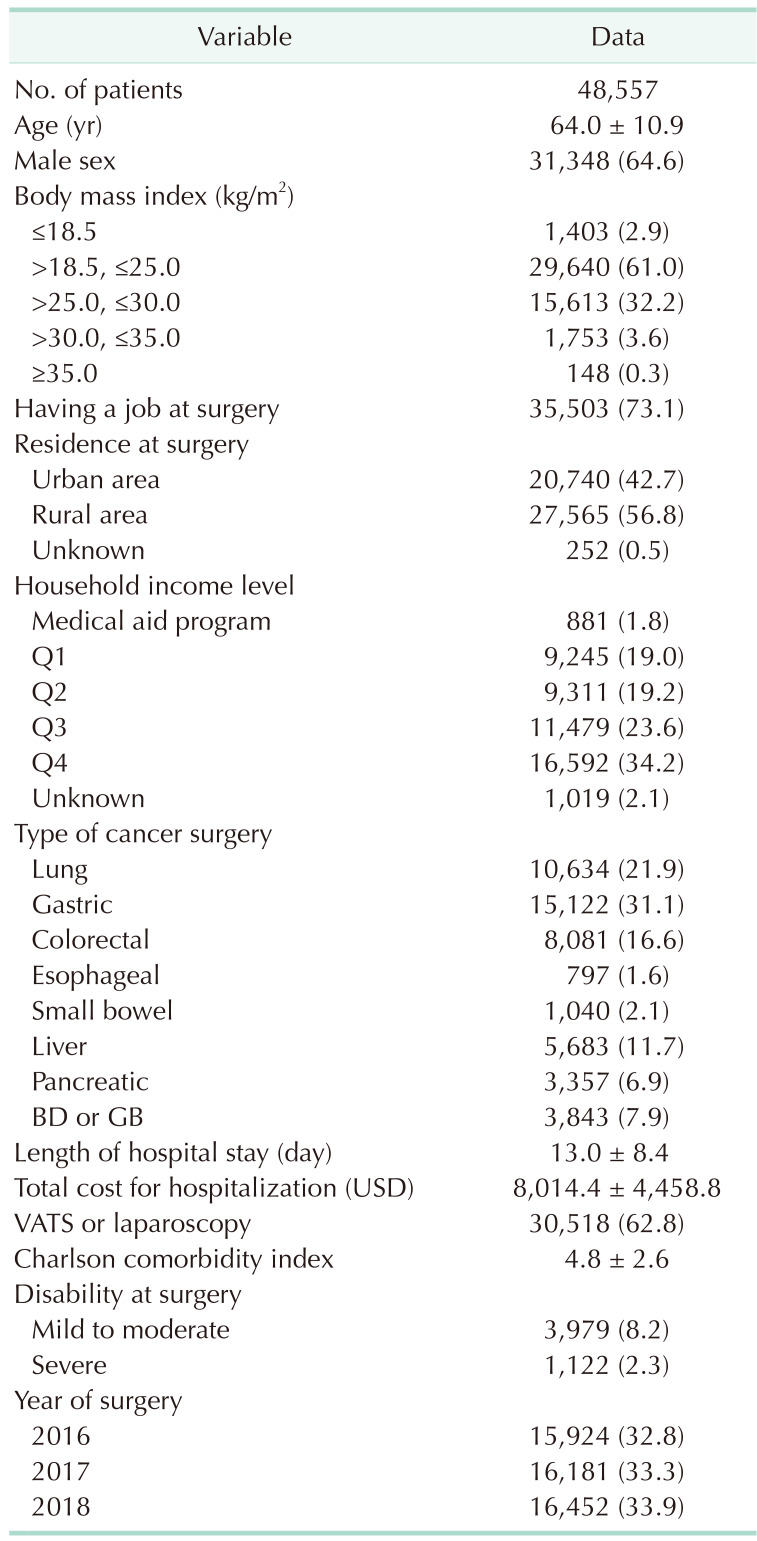

 XML Download
XML Download